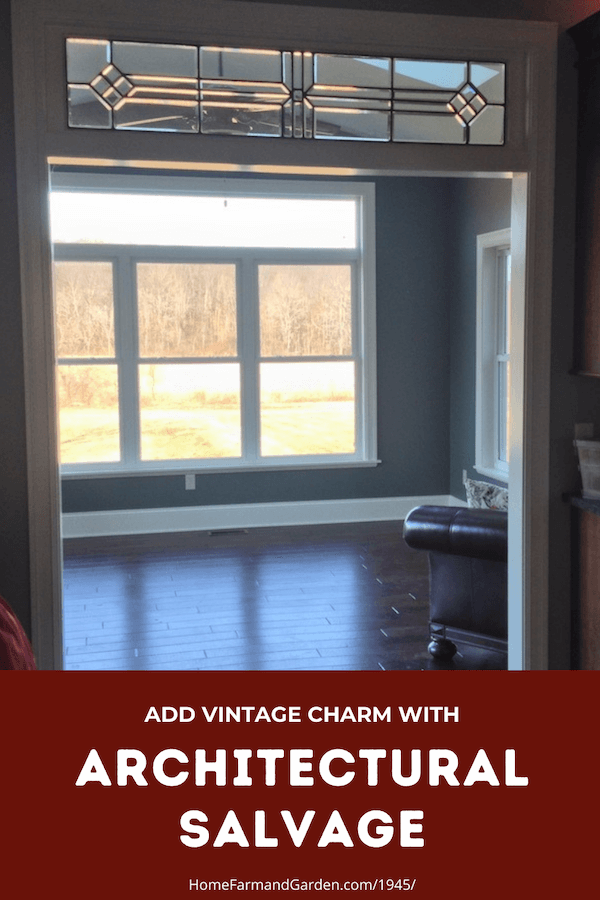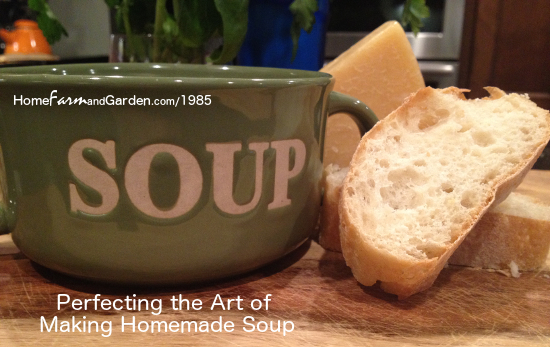Short on space for your vegetable garden? No problem!
Today we’ll talk about an easy way to grow more fruits, vegetables and herbs – even if you don’t think you have the room for it. The only requirement is that you have access to some outdoor space, whether it be your home’s foundation, deck, patio, or balcony.
 As I mentioned yesterday, our property has been quite the fixer upper. Now that we are finally starting to see some light at the end of the tunnel on the inside, we can start paying a little attention to the outside.
As I mentioned yesterday, our property has been quite the fixer upper. Now that we are finally starting to see some light at the end of the tunnel on the inside, we can start paying a little attention to the outside.
When we bought the house, the existing landscaping was overgrown and way past its prime. There was nothing that could be salvaged, so we tore every bit of it out – which broke my heart. 🙁 I’m all for saving every plant you can.
(I’m not 100% sure, but I’m willing to bet the majority had been planted when the house was built in the mid-1990s).
On the plus side, we get to start with a fresh slate this spring – which is pretty exciting! 🙂
Fruits and Vegetables in the Landscape
In our case, we do have room for a full-sized vegetable garden. But, if we didn’t – this is how I’d find the room to grow some must-have fresh fruits, vegetables and culinary herbs.
Foundation Plantings
Good News: If you live in a home with landscape plants around its foundation, you have plenty of opportunities to grow fresh produce. Assuming you have permission to modify the existing landscaping, you can weave in many different kinds of food-producing plants.
The key to doing this without making your home look like an eyesore is to look for plants that are both beautiful and yield a tasty crop. You will also want to be sure your ornamental plants aren’t sprayed with chemicals or pesticides that can contaminate your food-producing plants (and the rest of the environment around your house).
Most traditional landscape designs consist of a variety of ornamental trees, bushes, shrubs and flowering plants. While this approach can be very pleasing to the eye, it doesn’t do much for your stomach. So, instead of planting strictly ornamental landscape plants to improve your home’s curb appeal, start looking for edible alternatives that are suitable for your climate.
Here are Some Great Options:
- fruit-bearing trees – such as apples, pears, plums, peaches or cherries – are available in compact, attractive varieties.
- Blueberries are both delicious and nutritious, but many people don’t realize they grow on beautiful ornamental bushes that can add 3-season appeal to your landscape design.
- Compact bush beans form attractive deep green mounds that look lovely, especially when planted en masse.
- The gorgeous Swiss Chard ‘Bright Lights’ variety creates an eye-catching color pallet with its deep red and yellow stalks and dark green leaves.
In the fall, you can also tuck some hard-neck seed garlic in amongst your established landscape plants. To make them easier to find next year, plant them in clusters. Then, once they develop those charming gooseneck scapes in the spring, cut them off to force the plant’s energy back into the bulb.
Don’t let them go to waste, however. Tender garlic scapes are delicious chopped and used on top of baked potatoes, fresh salads or in soups.
Thyme is also a welcome addition to any landscape because of its gentle creeping habit and wonderful fragrance when it is disturbed. For this reason, thyme is ideal for filling in along paths and walkways. For a more distinctive look and wonderful citrusy aroma, look for the lovely lemon variety.
Make Use of Containers
If you plan to use your thyme (or other culinary herbs) in your recipes, plant some in elevated containers or in an out-of-reach area where domestic pets or other animals can’t get to them. (I don’t know about you – but our dogs have a knack for pee-ing exactly where they shouldn’t)
Sage, with its soft greyish-green leaves, is another herb that is as beautiful as it is delicious. Planted in groups, it makes an attractive decorative focal point in a mixed container. To enjoy, snip several leaves to make a delicious browned butter and sage sauce to top fresh gnocchi or pumpkin ravioli.
Even plants that aren’t traditionally attractive can add visual appeal to a landscape. For example, cherry or pear tomato plants aren’t necessarily pretty by themselves, but look great when added to large colorful containers and set in amongst other ornamentals.
Design Tip: use an odd-number of containers to create a strong visual statement. A collection of 3 or 5 bright red planters with neatly staked and well-maintained plants creates a visually interesting display.
Speaking of containers, don’t forget to tuck fragrant herbs and edible flowers in amongst more traditional annual ornamental flowers. Rosemary is a great addition to container gardens because it offers a strong vertical element that complements plants with more compact and trailing growth habits. You may want to consider edible flowers such as violas and chive blossoms, as well.
Patios and Balcony Plantings
If your planting area is confined to a small patio or balcony, don’t despair. You can still grow a lot of wonderful culinary herbs, dwarf fruit plants and a couple of tomato plants in a very small space.
To make the most of limited square footage in these areas is to take advantage of the vertical space above your planters and containers. For every square foot of growing space you have, there is another 6 foot or so of prime growing space above it. So look for creative ways to grow your favorite plants vertically with hanging baskets, mini-trellises or tower gardens.
You may just be pleasantly surprised by how much your modest growing space can produce. 🙂
Did you find this article helpful? If so, please sign up below to receive more articles just like it 🙂
 Adding Vintage Charm with Architectural Salvage
Adding Vintage Charm with Architectural Salvage